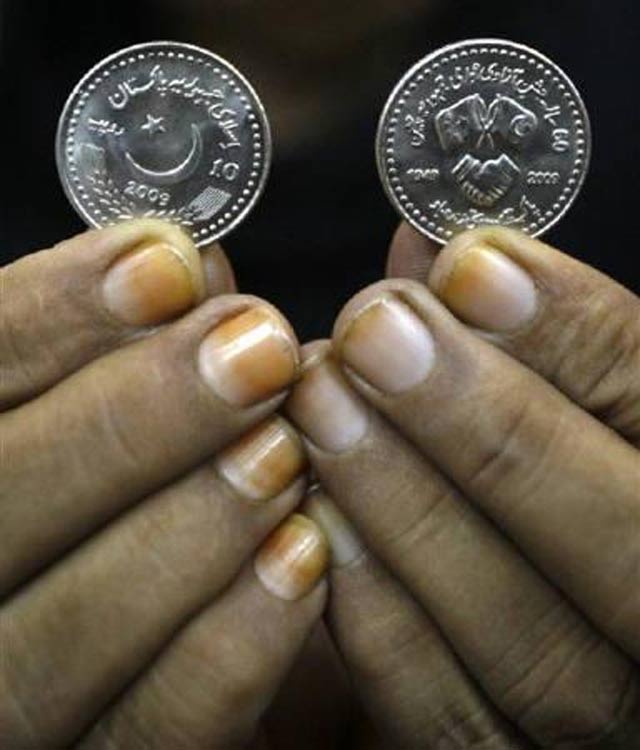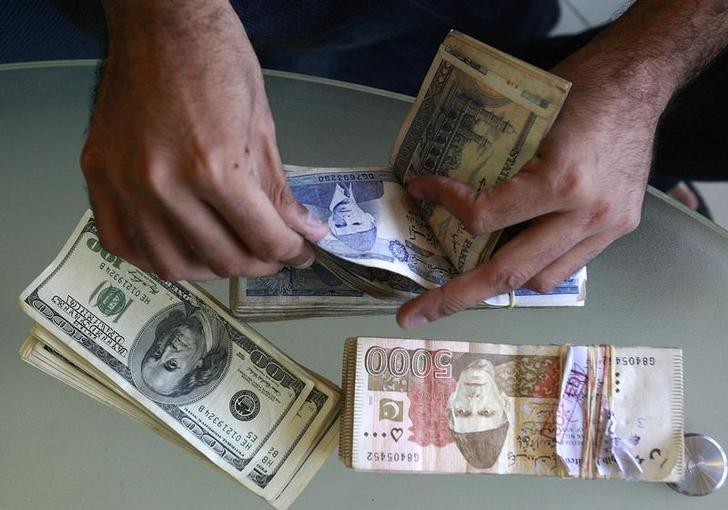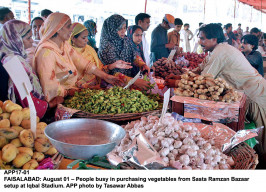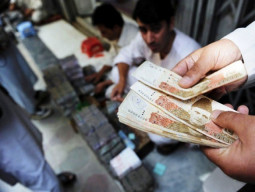
The option to let the rupee depreciate by around 9% was considered, said officials close to the matter, but the finance ministry remained firm in its policy of keeping the currency strong.
In order to contain the rapidly increasing current account deficit, the government considered three proposals - let the rupee depreciate by about 9%, introduce more cash margin requirements for import of goods, and increase custom duties on non-essential goods, said sources in the finance ministry.
Rupee dip ‘meant to fix imbalances’
Devaluation
They said that the Ministry of Finance did not support proposals to devalue the currency or enhance the list of goods requiring 100% cash for imports. This has narrowed down the government’s option to increasing tariff rates on imported goods. Even on this issue, broader stakeholders’ consultation has not been done and the work is restricted to the Ministry of Commerce and in part to the Ministry of Finance.
After consultation, there was opinion in the Prime Minister’s Office to let the currency depreciate by about 9% or Rs10 against the US dollar, said the sources. The rupee’s current value in the interbank market is around Rs105.4 to a dollar. The proposal was that the rupee value should be allowed to drop to Rs115 to a dollar in two stages, they said.
Sources said that Finance Minister Ishaq Dar was not sold on the idea of allowing the rupee to depreciate due to its adverse implications on external debt and inflation.
All the international financial institutions are, however, in favour of rupee devaluation. Pakistan booked a record current account deficit - gap between external payments and receipts - of $12.1 billion in the last fiscal year 2016-17, which was more than double the official estimates. This adversely affected official foreign currency reserves that, as of September 8, stood at $14.758 billion.
Against official projection of $9 billion current account deficit, independent economists have estimated it at $14 billion for the current fiscal year 2017-18 as well.
Cash margins
Sources said that the Finance Ministry was also not convinced about expanding the list of items for which importers have to provide 100% cash cover. One of the reasons for the Finance Ministry’s opposition was objections raised by the International Monetary Fund to a similar move made previously.
In February last year, Pakistan introduced 100% cash margin requirement on import of non-essential consumer goods to contain the widening current account deficit. “The cash margin deposits are not remunerated and constitute an exchange restriction and multiple currency practice subject to Fund jurisdiction under Article VIII Sections 2(a) and 3,” according to IMF’s Article IV report on Pakistan. The IMF had advised Pakistan that instead of imposing restrictions, the government should allow for greater downward exchange rate flexibility.
Rupee sinks 3.2% against US dollar, Dar and SBP divided over explanation
The report had noted that the federal government “expressed its commitment to remove such restrictions within one year”. This means the government will have to remove the cash margin requirements within the next five months.
The finance ministry’s view is that the external sector, which was under pressure in the last two years due to falling exports and declining remittances, has now started showing positive and impressive growth. These indicate that pressure on current account will ease going forward, it said.
Tariff restrictions
Sources said that the only available option was either imposing regulatory duty on over 500 items that are already subject to heavy tariffs or increase the rates on about 300 tariff lines.
They said that the National Tariff Commission undertook a two-pronged exercise to boost exports and contain imports. For enhancing exports, the NTC has proposed to completely abolish duties on import of raw materials for those items that are used in manufacturing of exportable goods, said the sources. This will hit government revenue to the tune of Rs17 billion.
The NTC has also identified about 300 tariff lines of non-essential consumer goods on which it has proposed to increase duties up to 30%, said the sources. These items are mostly consumer goods, cosmetics, and agriculture products. They said that this would lower the import bill of these 300 tariff lines by about 20% besides giving Rs26 billion additional revenue.
Published in The Express Tribune, September 15th, 2017.
Like Business on Facebook, follow @TribuneBiz on Twitter to stay informed and join in the conversation.




































1713853507-0/MalalaHilary-(2)1713853507-0-270x192.webp)








COMMENTS (2)
Comments are moderated and generally will be posted if they are on-topic and not abusive.
For more information, please see our Comments FAQ